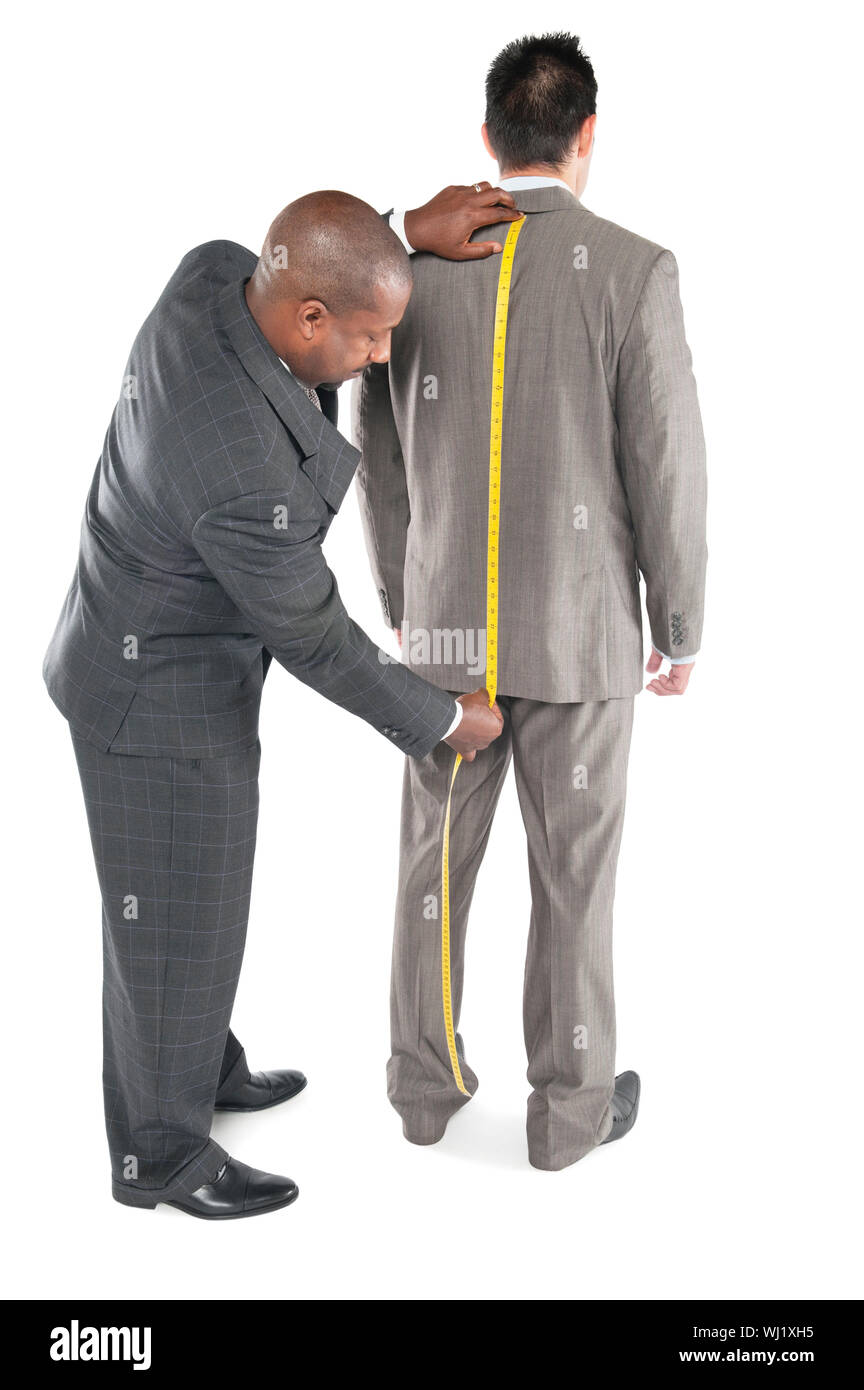Understanding the Tailoring Refine: From Material Choice to Last Fitting for the Ideal Closet
The tailoring process is an intricate interplay of art and science, starting with the critical decision of textile selection and finishing in the accurate modifications of last installations. Each textile kind brings special top qualities that influence not just the aesthetic appeal but also the garment's long life and viability for different events. Understanding the subtleties of tailoring methods can boost one's wardrobe to unmatched degrees of class. As we explore these aspects even more, one need to consider how also the tiniest details can significantly influence the general result of one's personal design.
Importance of Material Choice
Picking the right textile is vital in the tailoring procedure, as it directly affects the comfort, toughness, and total aesthetic of the final garment (tailor perth). The selection of textile sets the structure for the garment's functionality, style, and efficiency. Various materials have unique homes, such as weight, stretch, and breathability, which can considerably impact how the garment drapes and fits the body
Additionally, material selection impacts the garment's durability and ease of treatment. High-grade materials can withstand deterioration, preserving their look and framework over time, while lower-quality products might bring about pilling or fading. Furthermore, the right material adds to the garment's ability to change throughout celebrations and seasons, thereby enhancing flexibility.
A customized item made from a suitable material not just showcases craftsmanship but additionally elevates the user's self-confidence. As a result, recognizing the subtleties of material choice is critical for any customizing endeavor. It makes sure that the end product not just fulfills the aesthetic wishes of the customer yet likewise aligns with practical requirements, thereby attaining a harmonious balance between kind and feature in the customized closet.
Sorts Of Fabrics and Their Uses
Recognizing the different kinds of materials readily available is crucial for making informed choices throughout the tailoring process. Each material possesses special qualities that dictate its viability for particular garments and occasions.
Cotton, understood for its breathability and softness, is optimal for sportswear and summer garments. Its flexibility allows it to be customized right into whatever from tee shirts to outfits. Wool, on the other hand, is preferred for its heat and structure, making it a superb choice for official fits and outerwear - tailor perth. Its natural flexibility helps garments keep shape in time.
Silk shows high-end and is light-weight, making it perfect for eveningwear and delicate shirts; however, it calls for careful handling as a result of its frailty. Bed linen, with its distinctive surface, is a popular choice for warm climates, giving a crisp and airy feel, yet it wrinkles easily, which might influence the garment's appearance.
Artificial textiles, such as polyester and nylon, offer toughness and resistance to wrinkles, making them appropriate for everyday wear and energetic clothing. Comprehending these textile kinds and their residential properties permits better decision-making, making sure that each tailored piece not just fits well yet likewise lines up with the desired function and celebration.
The Tailoring Strategies Explained
The art of customizing relies on a selection of strategies that transform material right into well-fitted garments. Central to this procedure is pattern drafting, where a dressmaker produces layouts based upon the customer's dimensions and preferred design. This first action makes certain that the garment will certainly fit the user effectively prior to any kind of cutting takes place.
As soon as patterns are developed, cutting techniques come into play. Accuracy is critical as mistakes can bring about misfitting garments. Tailors commonly use different reducing approaches, such as single-layer reducing for detailed designs and multiple-layer reducing for effectiveness on common patterns.
Basting is an additional vital strategy, enabling tailors to temporarily stitch fabric assemble for a preliminary fitting. This technique uses the possibility to examine the drape and general shape before last stitching.
Seaming techniques, consisting of french joints like it and flat-felled joints, enhance the garment's durability and visual appeal. Tailors likewise employ methods such as interfacing and padding to supply structure and form to details areas, like shoulders and collars.
Finally, ending up techniques, including hemming and edge finishing, guarantee the garment's longevity while giving a polished appearance. With each other, these methods create the foundation of efficient tailoring, causing beautiful, custom-fit clothing.
Suitable Changes and Factors To Consider

Trick factors to consider consist of the shoulder fit, which needs to neither droop neither restrict activity, and the sleeve size, which need to enable for comfy arm motion while keeping a polished appearance. In addition, changes at the midsection can fine-tune the silhouette, with options to allow out or absorb textile as needed.
The surge of trousers is one more important element; it ought to sit pleasantly over the hips without causing pain, permitting for simplicity sites of movement. Hemming lengths for both pants and skirts should show the user's preferred design while respecting percentages.

Keeping Your Tailored Clothes
Constantly follow the care tag instructions, which might suggest completely dry cleaning for delicate materials or device cleaning for more long lasting materials. Stay clear of frequent laundering, as this can wear down the fabric and alter the garment's shape.
Storage space is just as essential; usage padded wall mounts for layers and coats to maintain shoulder framework, and shop pants folded neatly or hung to stop creasing. Protect garments from direct sunlight, which can fade shades and damage fibers.
In addition, regular inspections for small repair work can prevent bigger issues. Look for loose switches, fraying joints, or signs of moth damages, attending to these issues without find out this here delay to keep the garment's honesty.
Lastly, think about seasonal rotation. Wearing customized items in small amounts allows materials to recover, extending their life-span. By executing these upkeep methods, you can guarantee that your customized garments stay as excellent as the day you initially used them, improving your perfect closet for many years to come.
Conclusion
The tailoring process, incorporating fabric choice, experienced methods, and specific suitable modifications, plays a crucial function in creating garments that improve both convenience and style. Each phase contributes to the total efficiency of the last item, ensuring that garments not just fits well but also mirrors private identification. Furthermore, understanding the significance of upkeep expands the life of customized garments, solidifying their value in a well-curated closet. A thorough technique to customizing culminates in a polished and positive appearance.
Picking the appropriate material is crucial in the tailoring process, as it straight influences the convenience, toughness, and total visual of the final garment. The option of fabric sets the foundation for the garment's performance, design, and efficiency. Various fabrics have special residential or commercial properties, such as weight, breathability, and stretch, which can substantially influence how the garment drapes and fits the body.
The art of tailoring depends on a range of strategies that transform textile into well-fitted garments.The customizing process, encompassing textile selection, proficient strategies, and exact fitting changes, plays a critical duty in developing garments that enhance both convenience and design.
 Alisan Porter Then & Now!
Alisan Porter Then & Now! Tahj Mowry Then & Now!
Tahj Mowry Then & Now! Kelly Le Brock Then & Now!
Kelly Le Brock Then & Now! Batista Then & Now!
Batista Then & Now! Brooke Shields Then & Now!
Brooke Shields Then & Now!